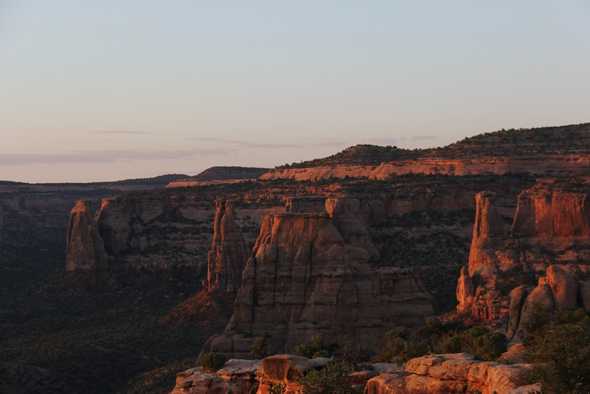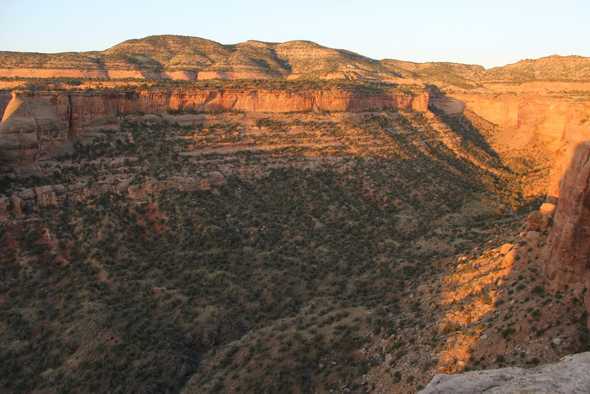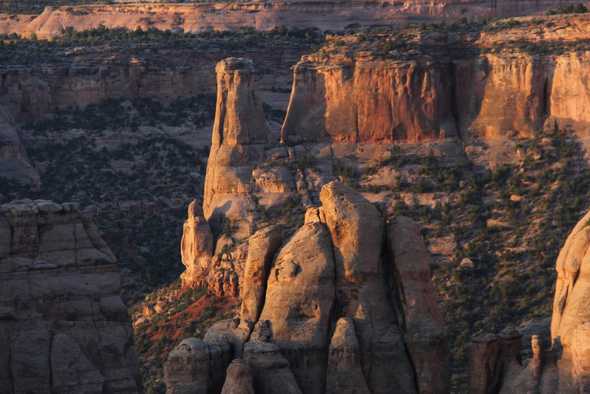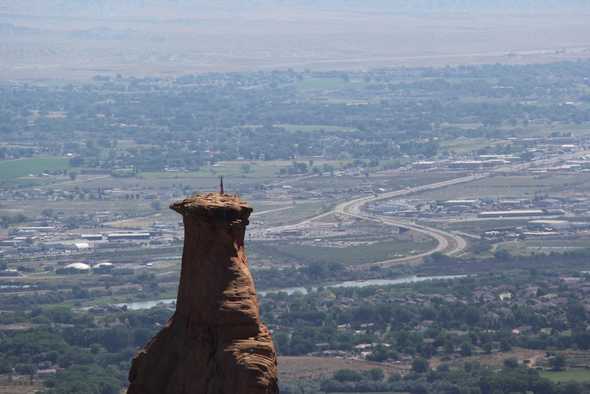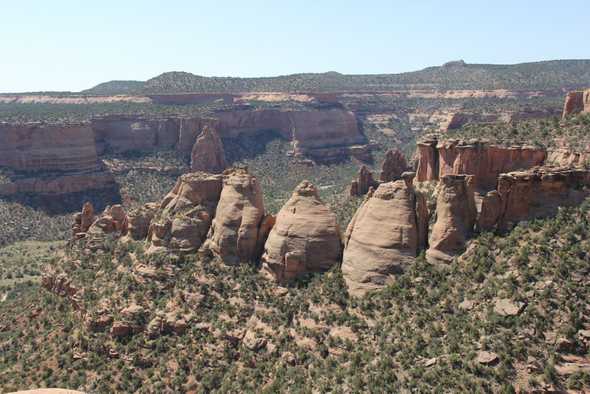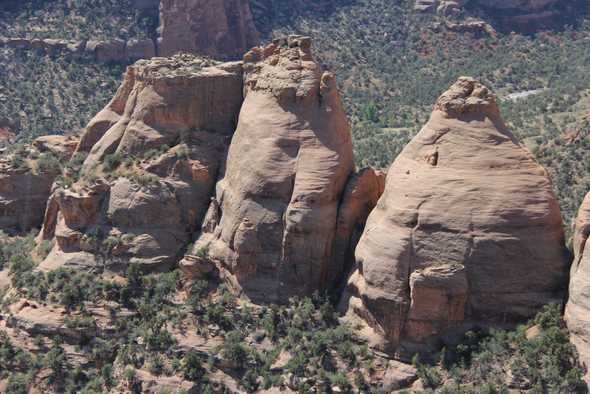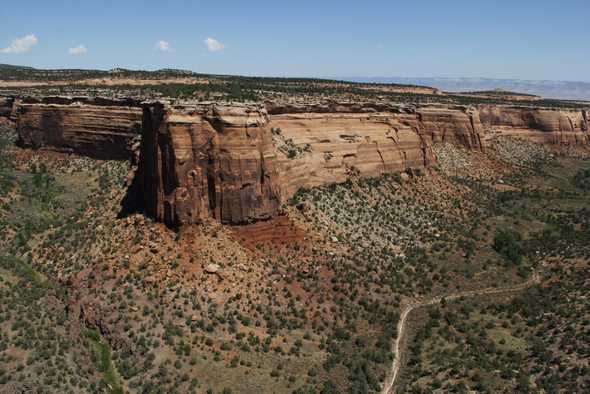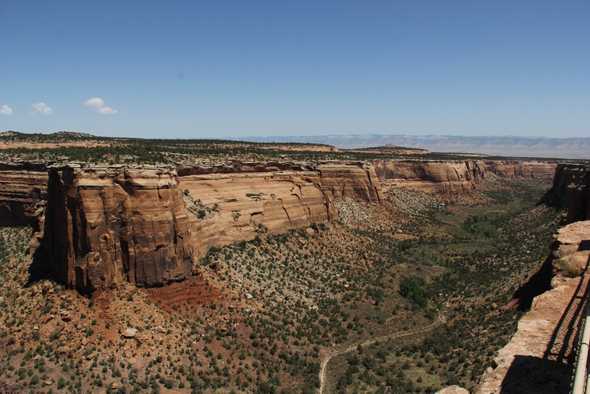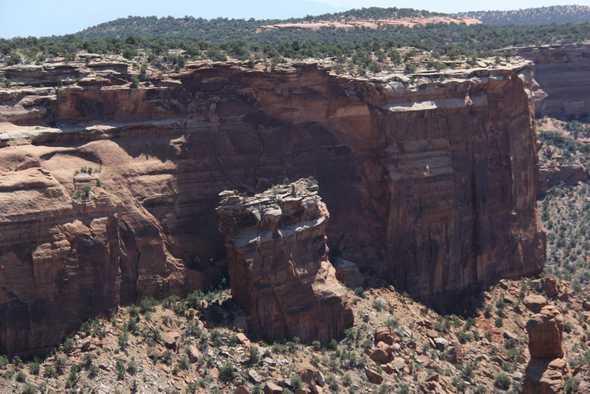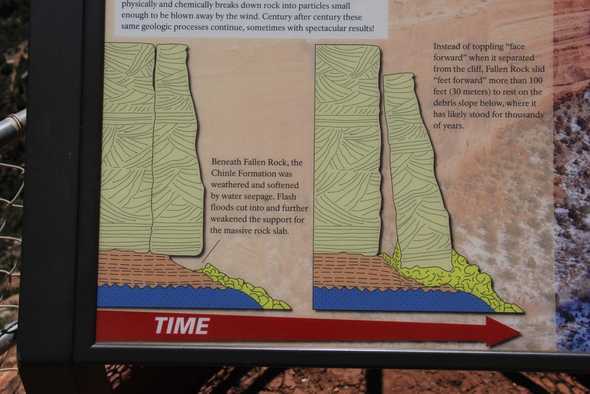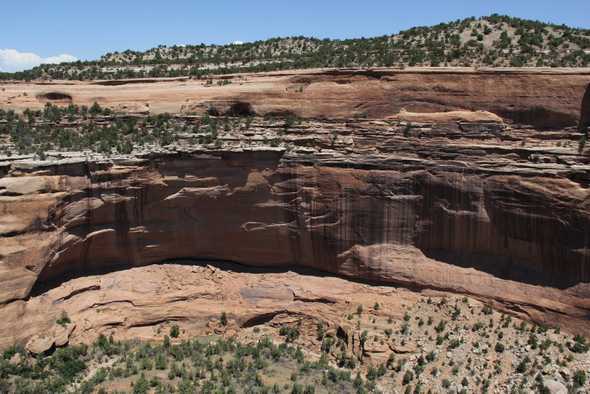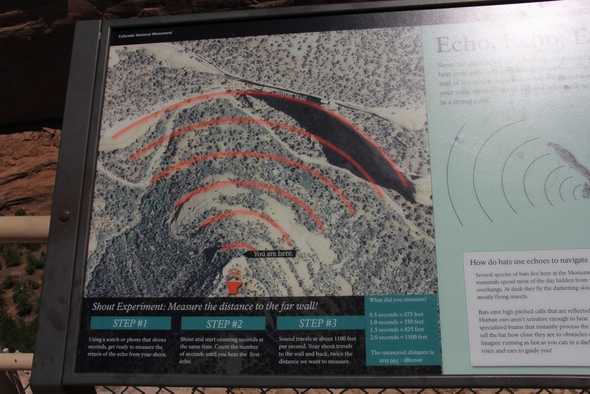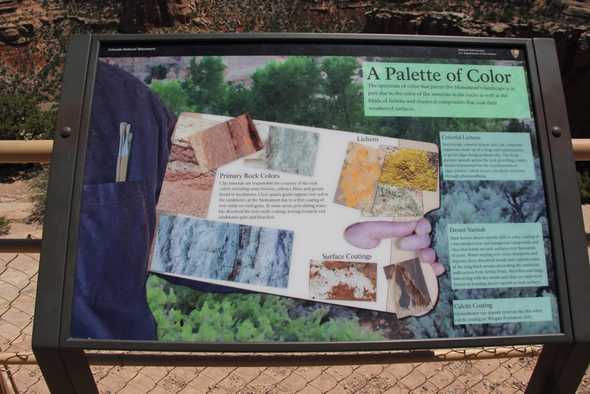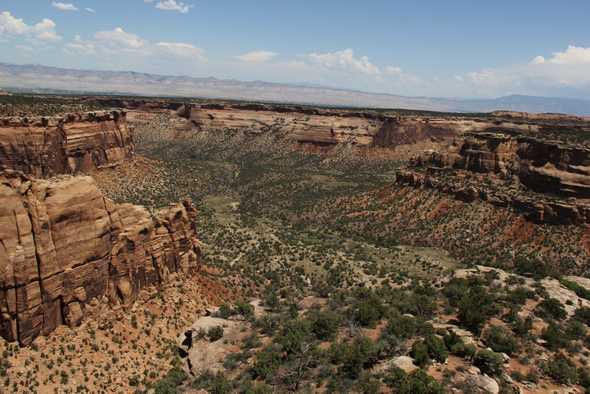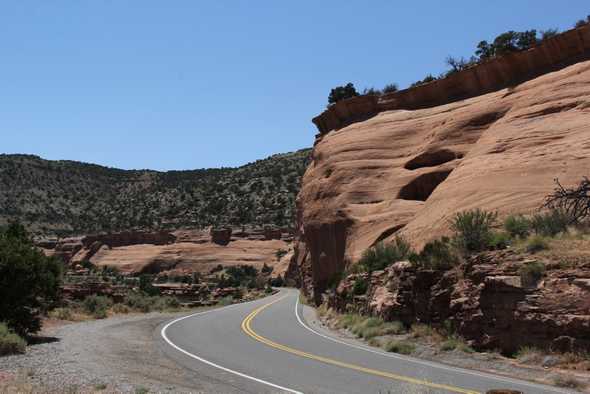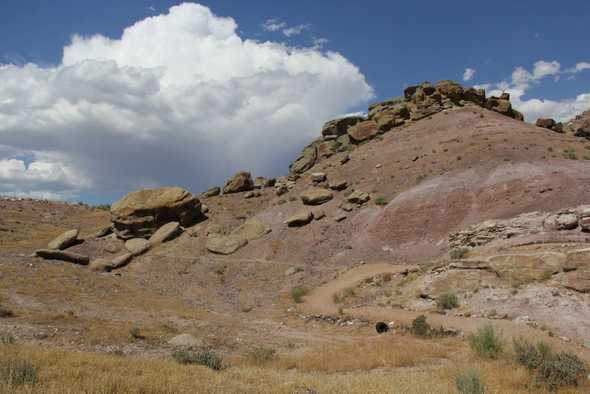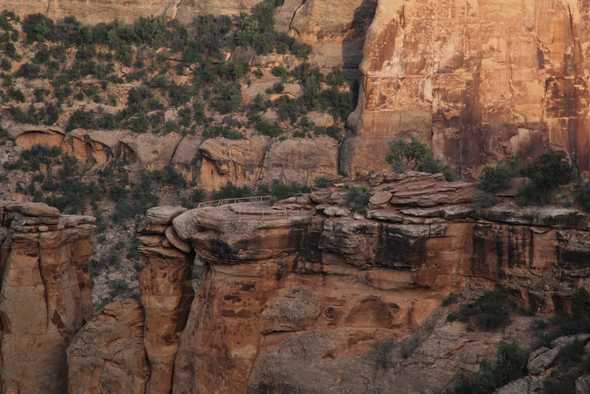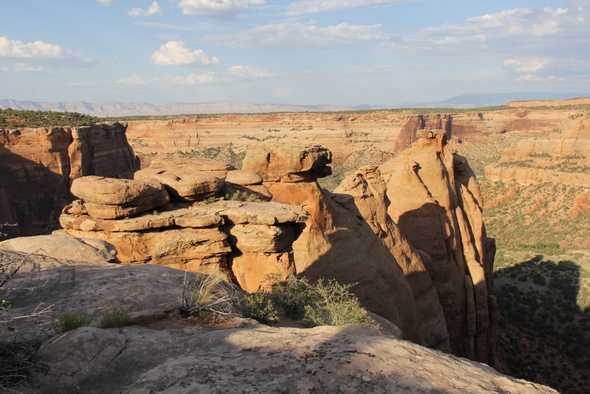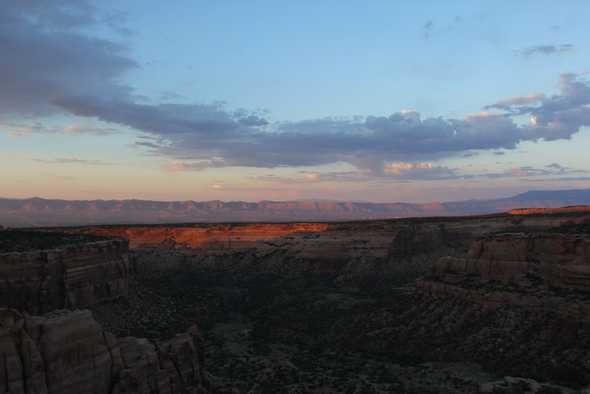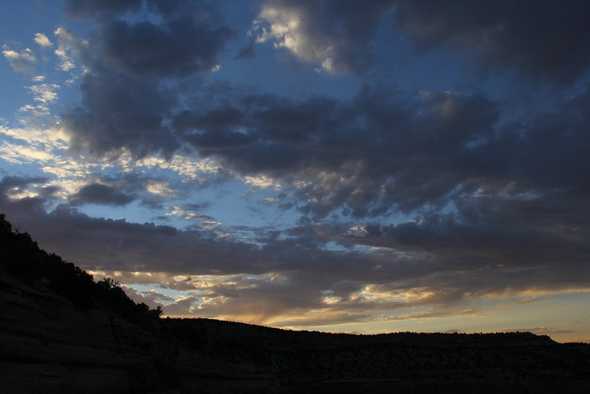Day 7: Colorado National Monument
Nature sure has a way to wake you up early when you camp. Light shining into your tent, early in the morning. Birds chirping. But I wasn’t too upset when I got to see a beautiful sunrise in return.
A short walk on the Canyon Rim Trail offered views of the sunshine on the walls of the canyons and the monuments across the way.
The flag on top of Independence Monument was replaced the other day. Every year on the Fourth of July, the search and rescue team and others climb to the top to replace the flag.
At the Coke Ovens Overlook, these formations have been eroded the Kayenta Formation layers away. The softer Wingate Formation beneath was then exposed and has formed these dome shapes that early visitors thought looked like man-made structures called coke ovens.
The Ute Canyon overlook also reveals a historical past. Ute people may have looked for places that appeared wet in the canyon bottoms as a sign the land was ready to give up some of its bounty. Utah Juniper cover the canyon floor.
Folding and faulting formed planes of weakness and cracking in several consistent directions. Flowing water subsequently eroded the rocks along these lines of weakness, leaving long, straight canyons. Summer rainstorms can cause massive flooding which move boulders and cobbles downstream. These tumbling rocks wear away underlying bedrock, carving the canyons. As the floodwaters subside, the boulders and cobbles are left behind on the canyon floor. Pebbles, sand and silt are carried further downstream and then also are left behind as the water velocity slows.
At the Fallen Rock overlook, a large piece of rock fell off the cliff across the canyon. Fallen Rock’s slow fall occurred over many centuries. As temperatures drop below freezing, liquid water freezes to ice and expands. Rocks crack and are pushed apart. Warmer daytime temperatures melt the ice and water physically and chemically breaks down the rock into particles. These particles are small enough to be blown away by the wind. Fallen Rock slid “feet forward” more than 100 feed to rest on the slope below. It has likely stood there for thousands of years.
At the Upper Ute Canyon View, one can hear their voice echo through the canyon. The canyon wall has eroded into curve that reflects the sound waves back at you.
Sound travels at about 1100 feet per second. It is a fun activity to estimate the distance to the canyon wall.
At Artists Point, a spectrum of color paints the landscape. It is partly due to the color of the minerals in the rocks as well as the kinds of lichens and chemical compounds that coat the weathered surfaces.
The Half Tunnel Exhibit remembers the high cost in humans life to build the twenty-three mile Rim Rock Drive. Nine men were killed in a single accident at Half-Tunnel when tons of rock suddenly fell from a cliff into their work area on December 13, 1933. Two other men died in separate accidents.
I headed back down to Fruita, Colorado, where I visited Dinosaur Hill. In 1900, Elmer Riggs, a paleontologist at the Chicago Field Museum, set out to the Grand Valley to collect dinosaurs. He discovered and excavated the rear two-thirds of an Apatosaurus excelsus skeleton, commonly known as Brontosaurus.
Back in Colorado National Monument, I ended the day on the 1/2 mile Coke Ovens trail.
Another beautiful sunset tonight, from Artists Point. As soon as the sun went down, the wind really picked up.

